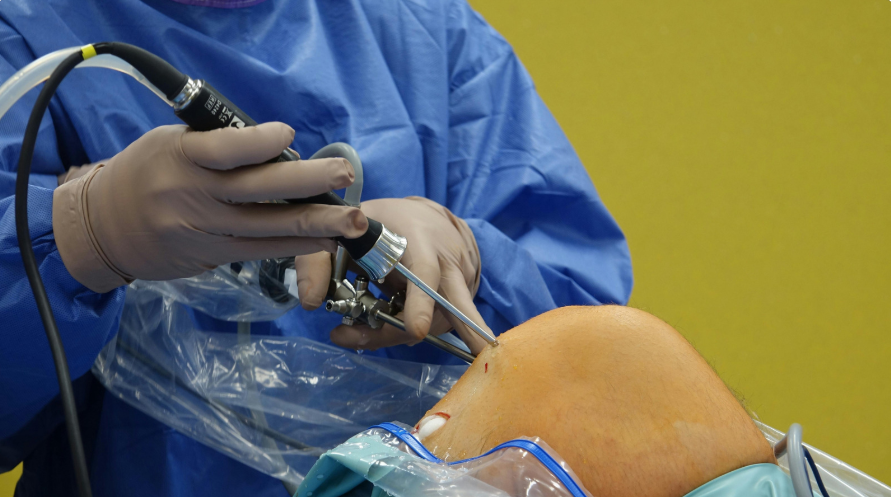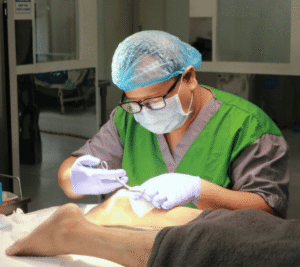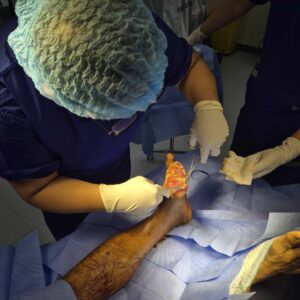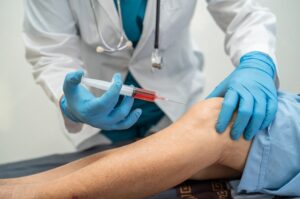Healthy joints are essential for maintaining mobility, independence, and overall quality of life. However, joint injuries can disrupt daily activities, causing pain, swelling, and limited movement. If you’re experiencing these symptoms, seeking the help of an arthroscopy doctor can be the key to a quicker and more effective recovery. Arthroscopy, a minimally invasive procedure, has gained popularity for its ability to treat joint injuries with less pain and a faster recovery time than traditional surgery. In this blog, we will explore how an arthroscopy doctor can help you recover from joint injuries and why this treatment method might be the right choice for you.
Understanding Joint Injuries and Their Impact
Joint injuries can arise from a variety of causes, including sports activities, accidents, or the natural wear and tear that comes with age. Common injuries include ligament tears, meniscus damage, or cartilage degeneration. The symptoms of a joint injury can include persistent pain, swelling, stiffness, and difficulty moving the affected joint. Without prompt intervention, these injuries can worsen, leading to long-term damage. An arthroscopy doctor plays a crucial role in diagnosing these injuries accurately, which is essential for determining the best treatment plan and preventing further complications.
What Is Arthroscopy and How Does It Work?
Arthroscopy is a medical procedure used by an arthroscopy doctor to examine and treat joint problems through small incisions. A tiny camera, called an arthroscope, is inserted into the joint, providing a clear view of the damage on a screen. This allows the arthroscopy doctor to make a precise diagnosis and carry out the necessary treatment, all while minimizing the size of the incisions. Compared to traditional open surgery, arthroscopy is less invasive, reduces the risk of infection, and leads to faster recovery times. It’s a cutting-edge solution that has revolutionized how joint injuries are treated.
How an Arthroscopy Doctor Helps in Joint Recovery
An arthroscopy doctor can provide a range of treatments, depending on the type and severity of your joint injury. First, they perform a thorough examination using imaging tests like X-rays or MRIs to get a clear understanding of the injury. Once a diagnosis is made, the arthroscopy doctor can repair torn ligaments, remove damaged cartilage, or treat conditions like arthritis or tendonitis. Because the procedure is minimally invasive, recovery is typically quicker and less painful compared to traditional open surgery. Additionally, an arthroscopy doctor will guide you through the recovery process, offering physical therapy recommendations and tips for lifestyle adjustments to help you regain full mobility and strength.
Benefits of Seeing an Arthroscopy Doctor for Joint Injuries
Seeing an arthroscopy doctor for joint injuries offers several benefits. The most significant advantage is the minimally invasive nature of the procedure, which leads to a quicker recovery. Since the incisions are smaller, patients experience less pain and a reduced risk of infection. Additionally, the hospital stay is usually shorter, allowing you to return to your daily activities faster. The expertise of an arthroscopy doctor ensures that the procedure is performed with precision, leading to better long-term outcomes. Overall, choosing an arthroscopy doctor can help you recover from joint injuries more effectively, with fewer complications and faster healing times.
What to Expect During Arthroscopic Surgery
When you undergo arthroscopic surgery, your arthroscopy doctor will first conduct a thorough consultation and review your medical history to ensure the procedure is appropriate for you. Before the surgery, you will be given instructions on how to prepare, such as fasting for a certain period of time. The procedure itself involves small incisions through which the arthroscopy doctor will insert the arthroscope and any necessary surgical instruments. The surgery is typically done under local anesthesia or general anesthesia, depending on the severity of the injury. After the procedure, your arthroscopy doctor will give you instructions for post-operative care and discuss the expected recovery timeline.
Tips for Faster Recovery After Arthroscopy
The recovery process after arthroscopic surgery is generally faster than traditional surgery, but it’s still important to follow your arthroscopy doctor’s advice for the best results. Physical therapy is a crucial part of recovery, as it helps restore movement and strength to the joint. Additionally, proper nutrition plays a vital role in healing—ensure you’re consuming enough protein, omega-3 fatty acids, and vitamins like vitamin D to promote tissue repair. Your arthroscopy doctor may also provide specific exercises to help you regain full mobility and avoid re-injury. By following these tips, you can speed up your recovery and return to your daily activities sooner.
When Should You Consult an Arthroscopy Doctor?
If you experience persistent joint pain, swelling, or limited movement, it may be time to consult an arthroscopy doctor. Early intervention can prevent further damage to the joint and improve the chances of a full recovery. If traditional treatments like physical therapy or rest have not alleviated your symptoms, an arthroscopy doctor can offer a more advanced solution. Choosing the right specialist is crucial, so make sure to seek out an experienced arthroscopy doctor who can provide a thorough assessment and recommend the most appropriate treatment options for your injury.
Takeaway
An arthroscopy doctor plays a vital role in the diagnosis, treatment, and recovery from joint injuries. By opting for arthroscopic surgery, you can benefit from a minimally invasive procedure that leads to less pain, a quicker recovery, and improved long-term mobility. If you’re suffering from a joint injury, consulting an arthroscopy doctor can help you get back to your normal activities faster and with fewer complications. Don’t let joint pain limit your lifestyle—seek the help of an expert and take the first step towards a healthier, pain-free future.






